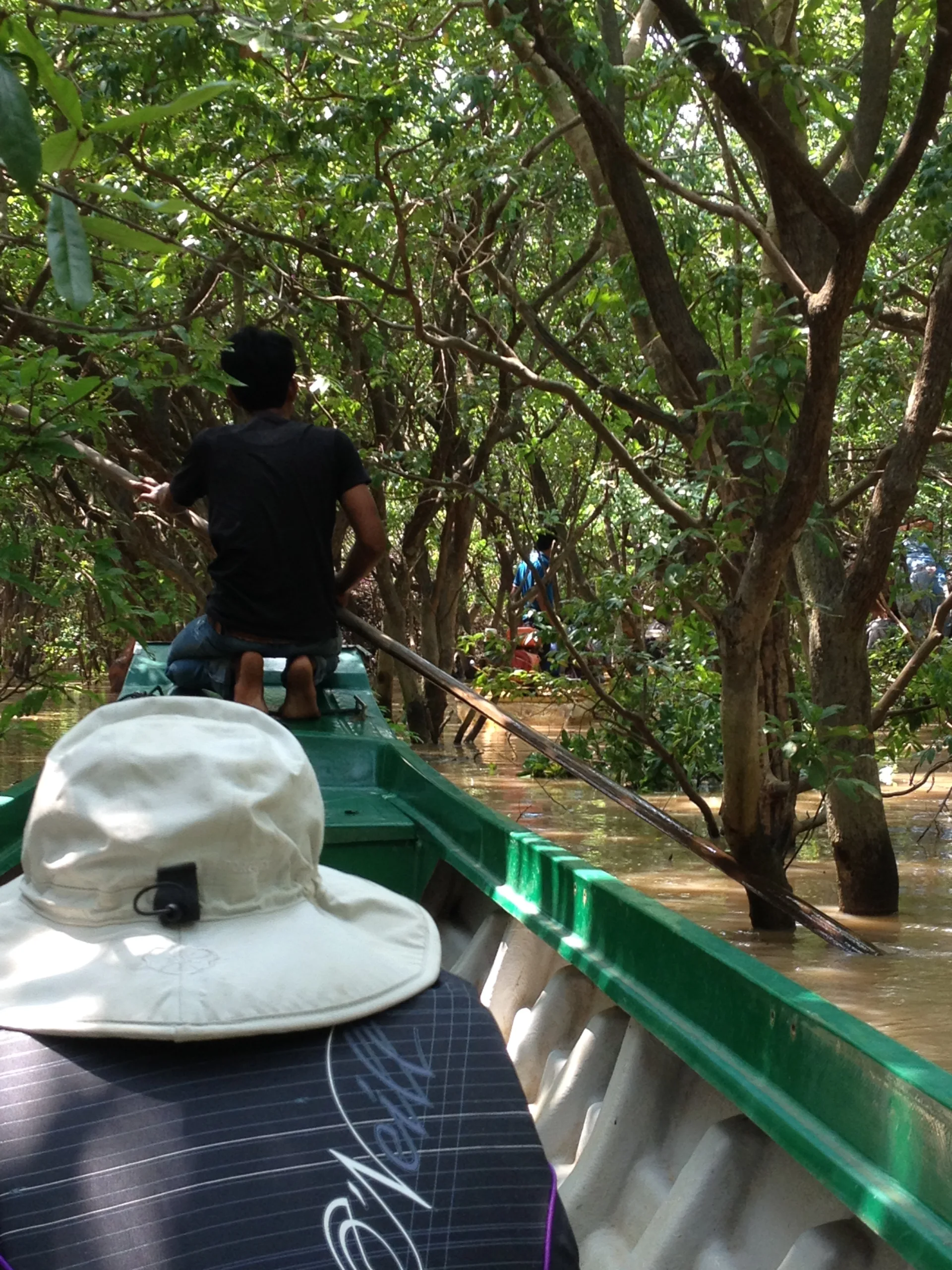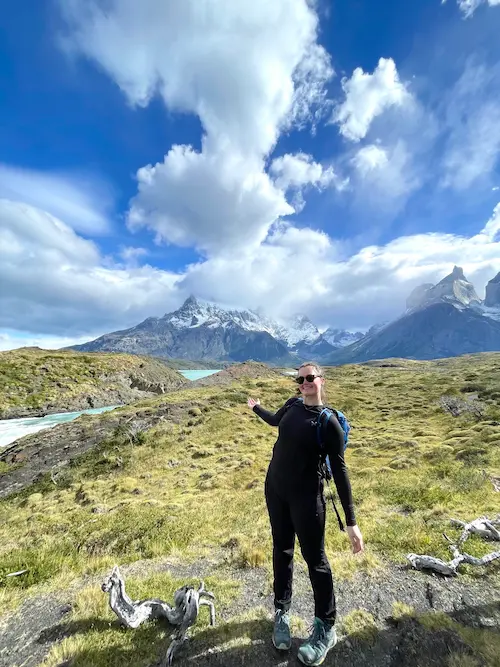A Day on the Lake
In my opinion, the best field trip so far was our visit to Kompong Kleang village. We spent the day on the Tonle Sap with an incredibly generous local family learning about fishing livelihoods and fish diversity. They endured us clumsy, goofy foreigners clambering onto their boats, conducting morphological observations of species on the floor of their kitchen, and laughed at us when we tried to pick up an especially slippery fish.
The best part of the whole day, in my eyes, was an epic boat-switch. Our hosts spent a good deal of time trying to start finicky boat motors, so our professor, Dr. Chouly Ou, decided with some of the boat drivers to swap our boat. Some of us made the switch in the middle of the water, but by that time our original boat was working, and the driver zoomed off with part of our group! Chouly just shrugged and said, “I guess we’ll meet them out there.” This situation added a little time onto our initial schedule, and may not have been what was originally planned, but it reminded me of the need for flexibility and humor in the study abroad experience. It showed me that no matter how prepared our wonderful professors and staff happened to be, the field experience may present unexpected challenges. Chouly especially inspired me to keep a positive attitude in the face of disruptions.
We eventually made it into the seasonally flooded forest, after a breezy and scenic ride past floating and stilted homes. The seasonally flooded forest habitat was unlike anything I’ve ever seen. The farther we wove into it between trees that are submerged only during the rainy season (when the Tonle Sap’s water level rises by about 8 meters), the more I felt like I was in another world. We stopped at the family’s traps and watched as one of the brothers dove under for long periods of time and surfaced with traps full of catfish, carp, and gourami. They also pulled up their giant bamboo trap and his younger brother climbed in and scooped fish straight from the trap into the boat.
On our way back to the house, we saw a Greater Adjutant! We’d seen one in captivity at the Angkor Centre for Conservation of Biodiversity, but it was even more impressive in the wild. These giant storks with funky looking throat sacs are endangered, so I never thought I’d catch a glimpse of one in its natural habitat.
Back at the family’s home, we measured, studied, and identified various fish species. We then conducted a livelihood interview with the six family members present, learning about their main sources of income and day-to-day roles. We returned back to the Center sweaty, smelling of fish (the family sent us home with one, which we ate for dinner), and looking forward to the next time we’d be back on the lake! All in all it was an incredible, eye-opening experience. And one that not many tourists have access to!

Stilted homes along the Tonle Sap

The seasonally flooded forest.

The Greater Adjutant! Not the most beautiful of birds, but impressive nonetheless.

Field booking for Conservation Science and Practice. We each picked a fish from the catch, measured it, described it, made predictions about its habitat and eating behavior based on mouth position, and then ultimately looked up its species. Mine was a Moonlight Gourami or Trichopodus microlepis.
Related Posts


